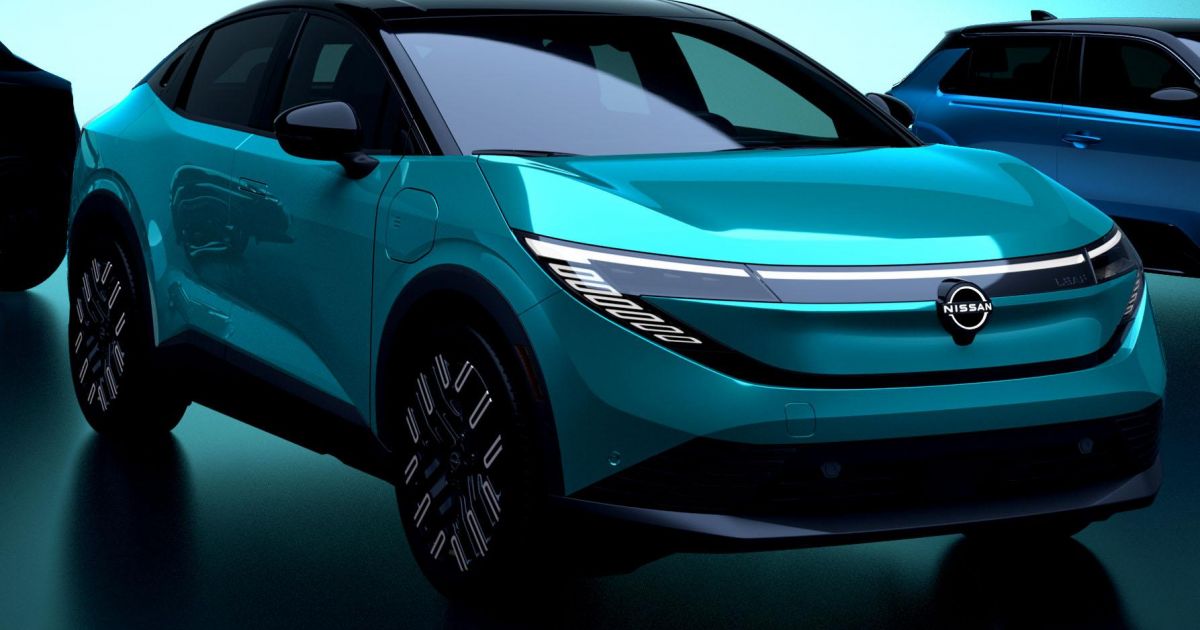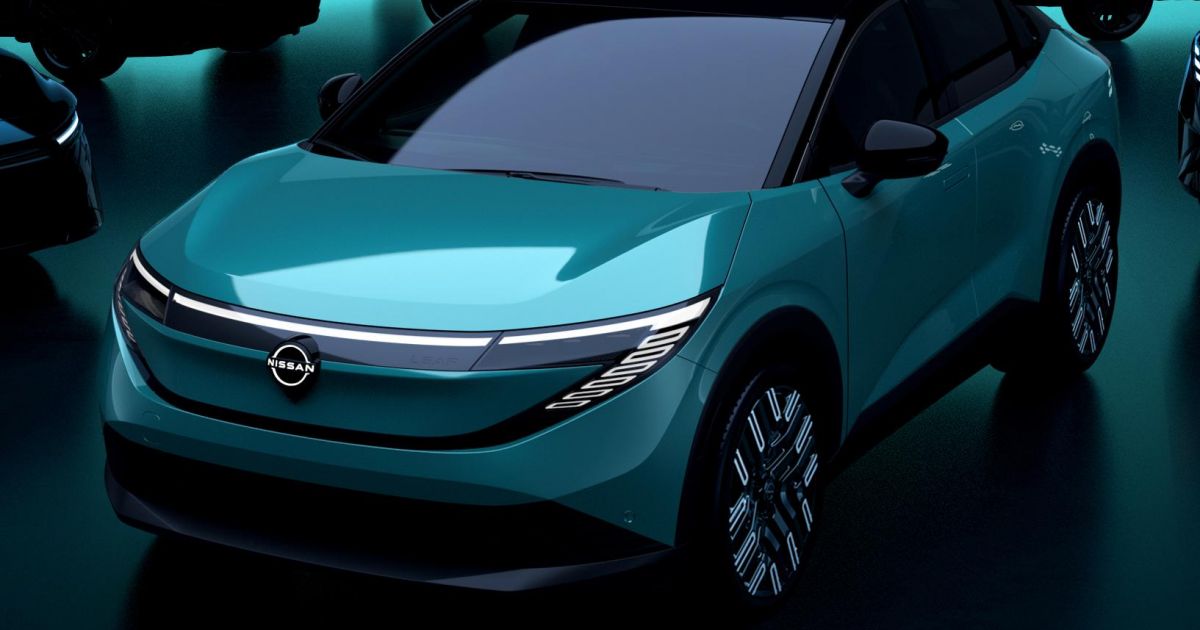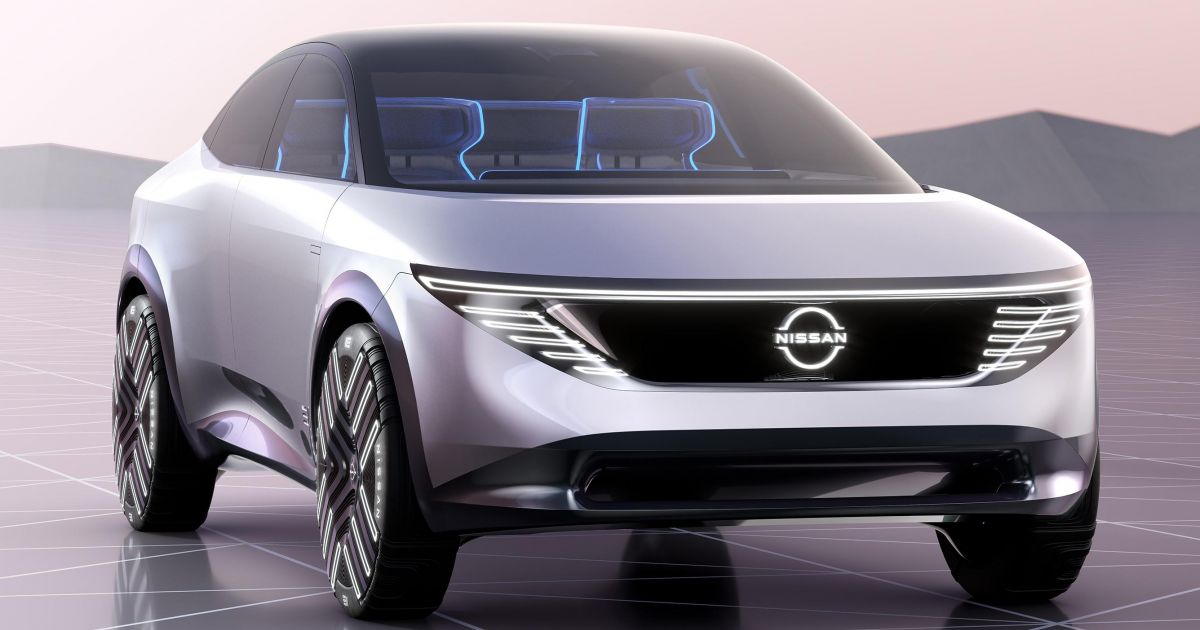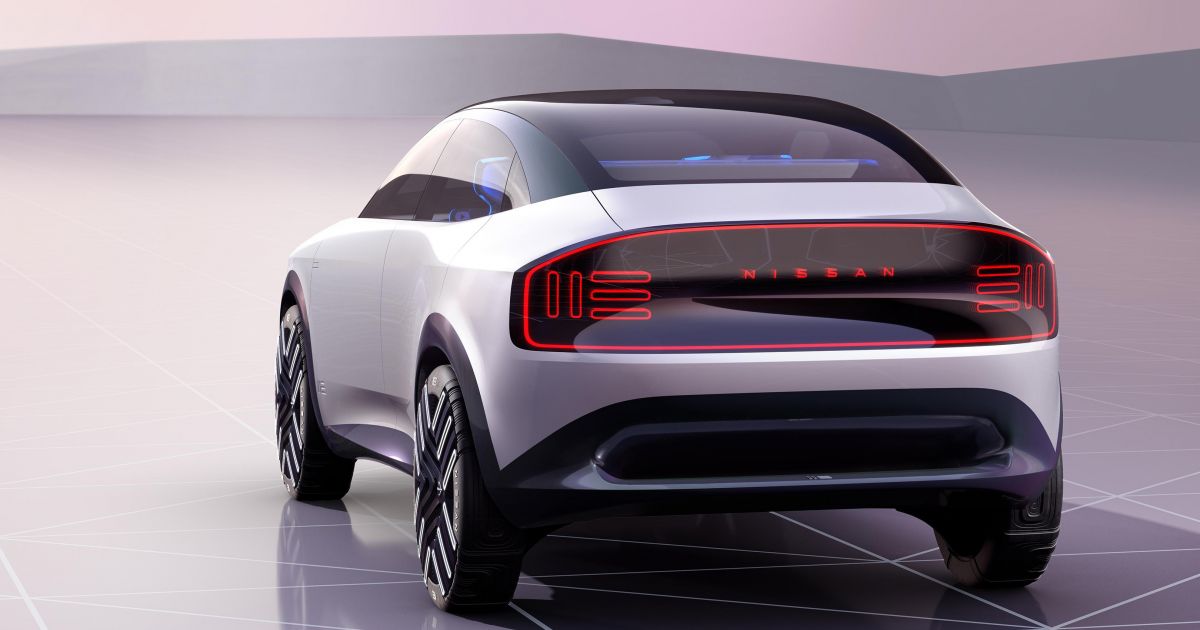The covers have been whipped off the third-generation Nissan Leaf ahead of production beginning this year, and sales commencing in Australia in 2026.
As has been telegraphed by the automaker, the new Leaf will abandon the hatchback body style that adorned its first two iterations to become a crossover.
100s of new car deals are available through CarExpert right now. Get the experts on your side and score a great deal. Browse now.
The automaker published a set of front profile shots of the third-generation Leaf, and these show the new car’s taller body and ride height, as well as black plastic wheel arch protectors.
There’s also flush-fitting door handles, and a blacked out roof with matching A-, B-, and C-pillars. Up front, the car’s dark 7-shaped headlights are joined by a piece of black plastic, which is embossed with the Leaf name and includes a light bar.
Styling for the new Leaf seems to be an evolution of the Chill Out concept, which made its debut way back in 2021.
Unlike the first two generations, the new Leaf’s charging port isn’t front and centre under the Nissan logo, but on the right-hand side behind the front wheel arch.
Nissan says the new Leaf will be available with 19-inch alloy wheels and a panoramic sunroof. In the North American market it will be fitted with a NACS charging port and will have access to Tesla’s Supercharger network.
Unfortunately Nissan didn’t publish any technical details today, but promised the new car will have “significant range improvements”. More will be revealed in the middle of the year.
Under the skin the Leaf employs the CMF-EV architecture that underpins the Ariya crossover. The platform, rebranded as AmpR Medium, also serves as the basis of the Renault Megane E-Tech and Scenic E-Tech.
The Ariya is available with 65kWh and 90kWh battery packs, and a selection of drivetrains, starting with a 160kW/300Nm front-wheel drive setup and topping out with a 290kW/600Nm all-wheel drive dual-motor system.
Depending on the drivetrain and battery pack combo, the Ariya’s WLTP driving range is between 360km and 500km.
By way of comparison, the second-generation Leaf — which is currently in run-out mode in Australia — has a 110kW/320Nm motor paired to a 39kWh battery in its base trim with a WLTP driving range of 270km.
The e+ variant has a beefier 160kW/340Nm electric motor, larger 62kWh battery, and a WLTP range of 385km.
Unlike most other EVs sold in Australia today, which are equipped with a CCS port, the second-generation Leaf uses the less popular CHAdeMO standard. The related Ariya crossover is equipped with a CCS port in most export markets.
For the European market the third-generation Leaf will be built at Nissan’s UK factory in Sunderland. Australian market Leafs have been sourced from Sunderland, and we understand this arrangement is set to continue.
The new Leaf and the upcoming Micra EV were revealed at an event hosted by Nissan’s chief planning officer, and soon-to-be CEO, Ivan Espinosa, where he detailed all the models the automaker will launch in 2025 and 2026.
MORE: Everything Nissan Leaf





